We post news and comment on federal criminal justice issues, focused primarily on trial and post-conviction matters, legislative initiatives, and sentencing issues.

MIRACLE RECOVERIES SEEM TO FLATTEN OUT AS CRITICS TAKE AIM AT BOP AND MARSHALS
The Federal Bureau of Prisons COVID-19 numbers fell 9% last week, but that statistic is only part of the story.
After bottoming out at 1,272 on Tuesday, the number of active inmate coronavirus cases climbed back into the 1,300s, where they stayed all week. Last night, the number was 1,356. What’s more, BOP staffers with COVID-19 stands at 570, virtually the same as the 571 sick staffers a week ago. The number of BOP facilities with active cases fell slightly from 114 to 111. Deaths, unsurprisingly, rose from 116 to 118 (this number, like the number of inmate cases, includes federal prisoners in private prisons as well).
Since March, the BOP has administered 45,702 tests. If this were one test per inmate, the agency would have completed tests on 29% of its population (but there’s no assurance some people have not been tested multiple times). The BOP is still finding an infection rate among inmates to be 26%.
What the stats show is that the BOP has exhausted its supply of infected inmates it can now miraculously declared to be cured because of a lapse of 10 days from the date the positive test came back. Once again, it appears that the Bureau is finding new cases as fast as it can write off old one.
At the same time, the number of sick staffers is stubbornly refused to fall, and remains nearly double a month ago and three times the level in mid-June. Likewise, the number of institutions where the virus is present is not budging.
 These Transfers Are Killing Me: Nevertheless, Phase Nine is now in place, and the BOP is seeing inmate transfers and admissions once again. Meanwhile, VICE News published a lengthy article last week alleging that continued US Marshal Service transfer of prisoners during the pandemic was responsible for much of the spread of COVID-19 throughout the BOP. According to VICE News, whistleblower complaints it had obtained alleged “federal prisoners infected with the coronavirus have been shipped as far as Puerto Rico in recent weeks, and to federal lock-ups in Alabama and Florida. BOP employees say prisoners have also tested positive after being shuffled around to facilities in Colorado, Illinois, Texas, Oklahoma, Pennsylvania, and Louisiana.”
These Transfers Are Killing Me: Nevertheless, Phase Nine is now in place, and the BOP is seeing inmate transfers and admissions once again. Meanwhile, VICE News published a lengthy article last week alleging that continued US Marshal Service transfer of prisoners during the pandemic was responsible for much of the spread of COVID-19 throughout the BOP. According to VICE News, whistleblower complaints it had obtained alleged “federal prisoners infected with the coronavirus have been shipped as far as Puerto Rico in recent weeks, and to federal lock-ups in Alabama and Florida. BOP employees say prisoners have also tested positive after being shuffled around to facilities in Colorado, Illinois, Texas, Oklahoma, Pennsylvania, and Louisiana.”
VICE News quoted Anthony Koeppel, a BOP union local official at FCI Pollock, as saying, “It’s putting staff at risk, it’s putting inmates at risk, and it’s putting the community at risk. We’re talking about lives here. This is an extremely dangerous situation.”
The Marshals say they aren’t required to do any testing because “an agreement was made” that the BOP would handle tests and quarantines once prisoners are transferred into its lock-ups.
VICE News said BOP staff and prisoners have blamed transfers for helping the COVID-19 “wreak havoc across the BOP, killing 111 prisoners and at least one staff member, and infecting over 10,000 prisoners and 1,200 workers… The agency officially halted most movement of prisoners in March in an effort to limit the spread of the virus; when it does transfer prisoners itself, it requires them to undergo coronavirus testing and a 14-day quarantine before and after being moved. But the Marshals don’t abide by those rules — and they keep moving people. While transfers have slowed — down 76% from April to July compared to the same period last year, according to the Marshals — they never truly stopped.”
 Prisons and Herd Immunity: The Los Angeles Times noted last week that the prison experience with COVID-19 at San Quentin State Prison north of San Francisco suggests that herd immunity would come with substantial cost. “Herd immunity” is the idea is that eventually, a sufficient percentage of the population will have survived COVID-19 and become immune, which in turn protects the rest of the uninfected population by interrupting the spread of the virus.
Prisons and Herd Immunity: The Los Angeles Times noted last week that the prison experience with COVID-19 at San Quentin State Prison north of San Francisco suggests that herd immunity would come with substantial cost. “Herd immunity” is the idea is that eventually, a sufficient percentage of the population will have survived COVID-19 and become immune, which in turn protects the rest of the uninfected population by interrupting the spread of the virus.
“COVID-19 spread unchecked across California’s oldest prison,” the Times reported, “in ways that stunned public health experts, despite efforts to control the disease. As of Monday, there had been more than 2,200 cases and 25 deaths, among a population of more than 3,260 people.”
Expert Questions BOP “Recovered” Declarations: The BOP has experienced its own “San Quentins,” the latest arguably being FCI Seagoville, Texas, where 77% of the 1,746 inmates had COVID-19. As of Sunday night, only 35 inmates reportedly had active cases.
But Dr. Homer Venters – an epidemiologist investigating COVID-19 in the BOP – is skeptical. “People that tested positive, let’s say three, four weeks ago, may be considered recovered or not part of active cases,” Venters told KXAS-TV. “When you kind of wave a wand over people and say they’re recovered, my experience going into jails and prisons is many of them are not actually recovered. Many of them have new shortness of breath, chest pain, ringing in the ears, headaches. Other very serious symptoms.”
Serious Long-Term Effects: Another recent concern has arisen over long-term heart damage among younger people who contract COVID-19. Experts have linked coronavirus to development of a condition called viral myocarditis, which is a weakening of the general heart muscle.
 “That is happening upwards of 50% of the people who are hospitalized with COVID will end up with some kind of cardiac damage. Some more severe than others,” Dr. Scott Miscovich, a Honolulu COVID specialist, said. “When you have that much damage to your heart muscles, not only are you going to be short of breath walking to a chair to the bathroom, you’re probably only going to survive five years.”
“That is happening upwards of 50% of the people who are hospitalized with COVID will end up with some kind of cardiac damage. Some more severe than others,” Dr. Scott Miscovich, a Honolulu COVID specialist, said. “When you have that much damage to your heart muscles, not only are you going to be short of breath walking to a chair to the bathroom, you’re probably only going to survive five years.”
VICE News, ‘Con Air’ Is Spreading COVID-19 All Over the U.S. Prison System (August 13)
Los Angeles Times, San Quentin’s coronavirus outbreak shows why ‘herd immunity’ could mean disaster (August 11)
KXAS-TV, Seagoville Federal Prison COVID-Cases Fall Drastically, Expert Warns Against New Data as Family Mourns Loss (August 14)
KHON-TV, Hawaii COVID-19 expert concerned about heart damage for young people (August 10)
– Thomas L. Root


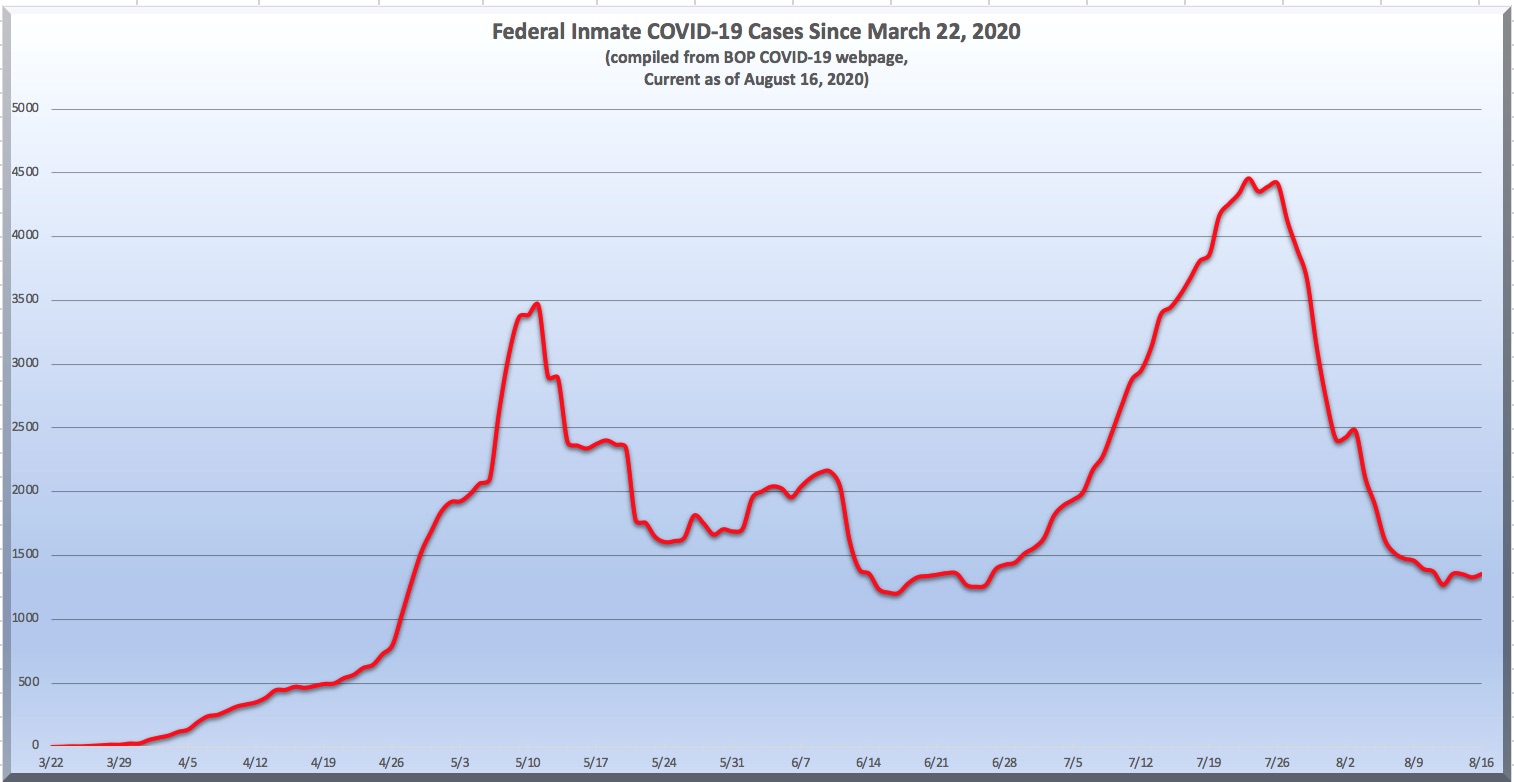



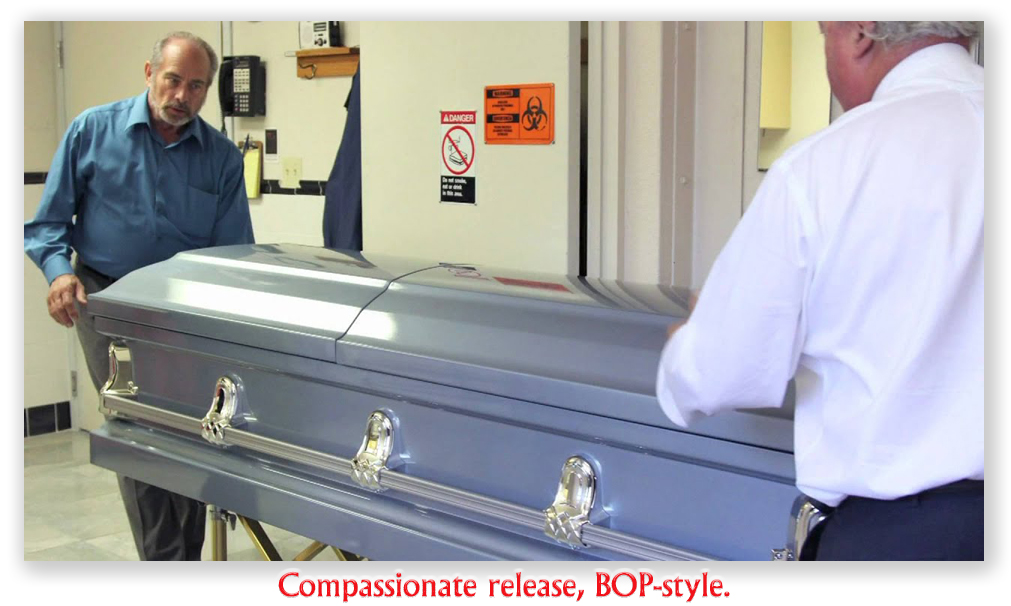




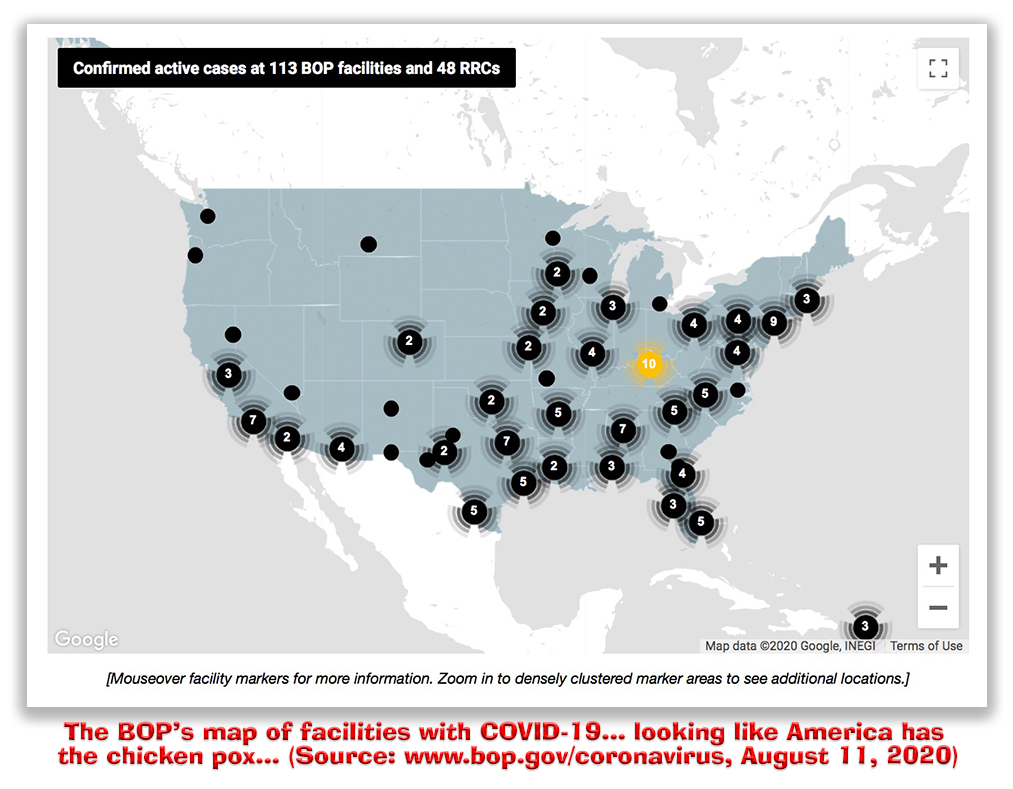


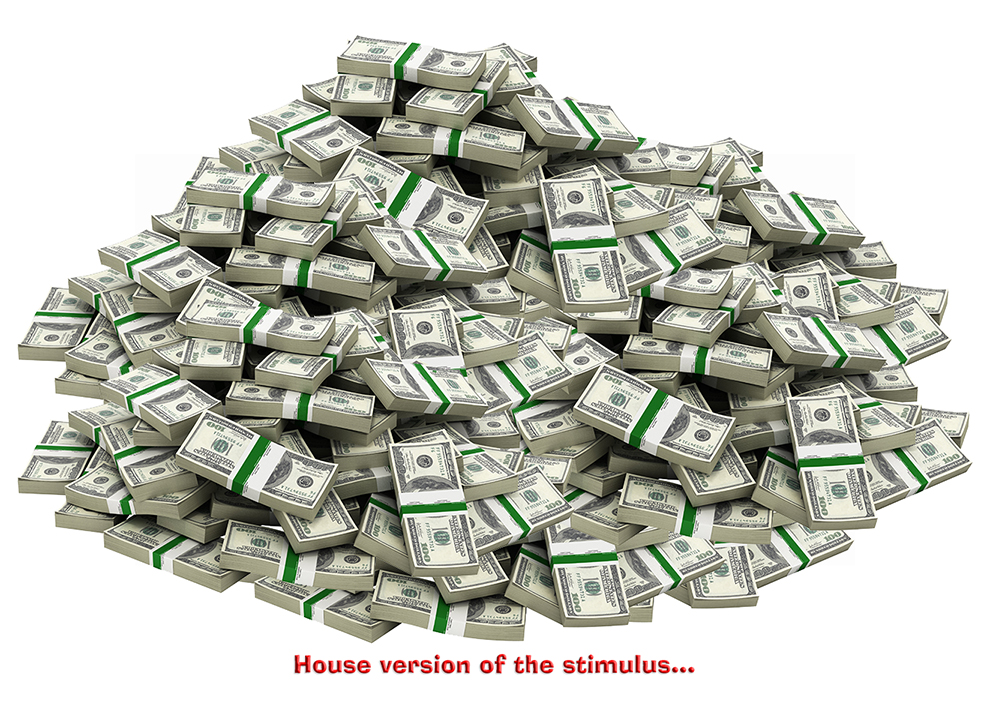


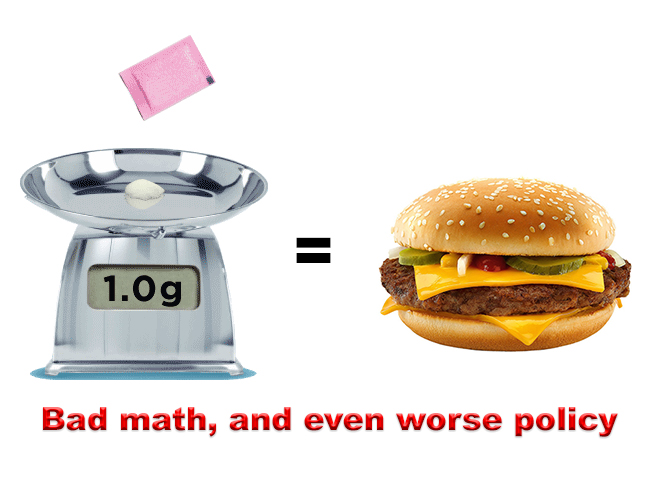


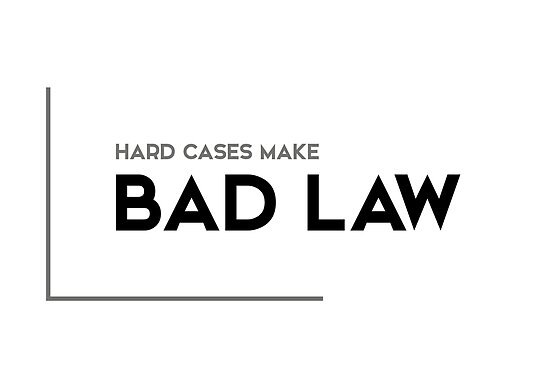

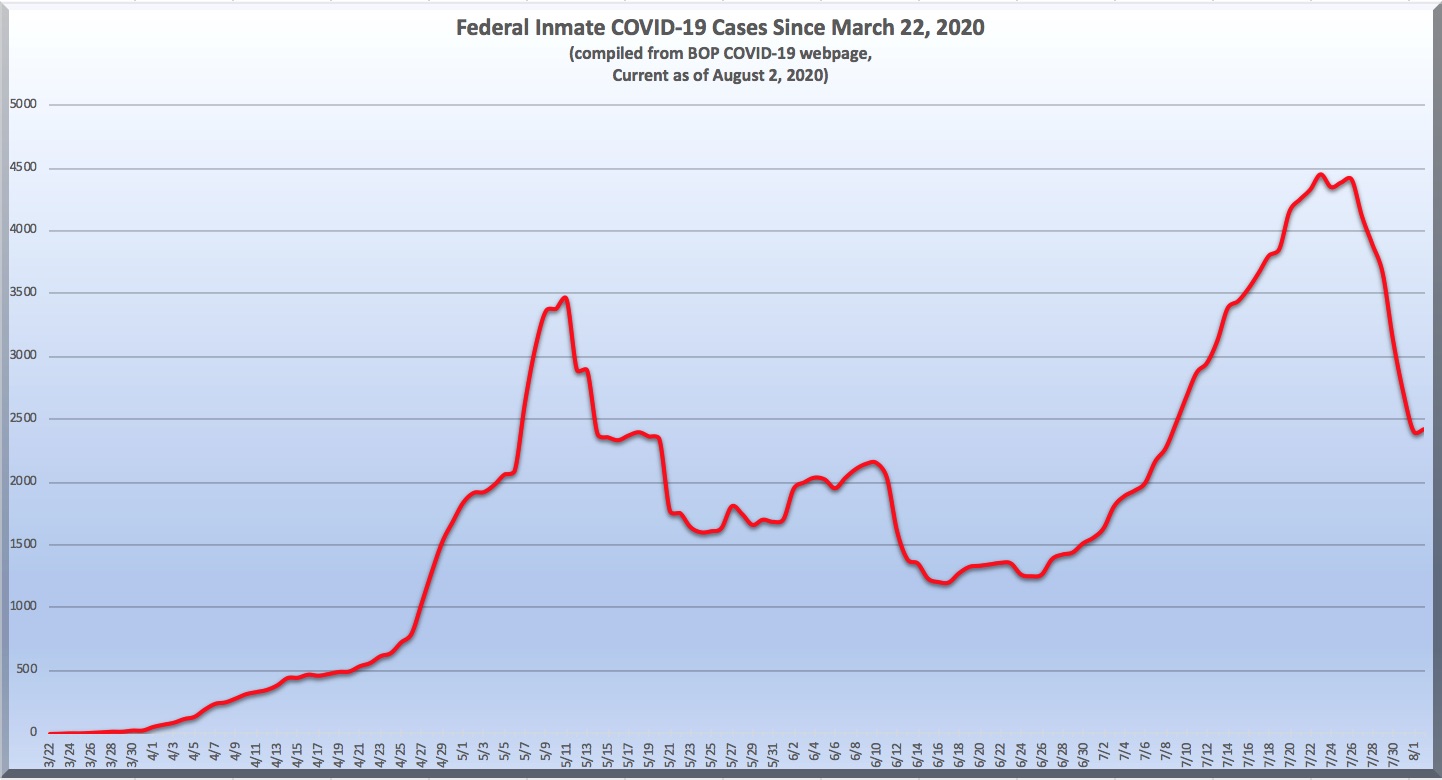
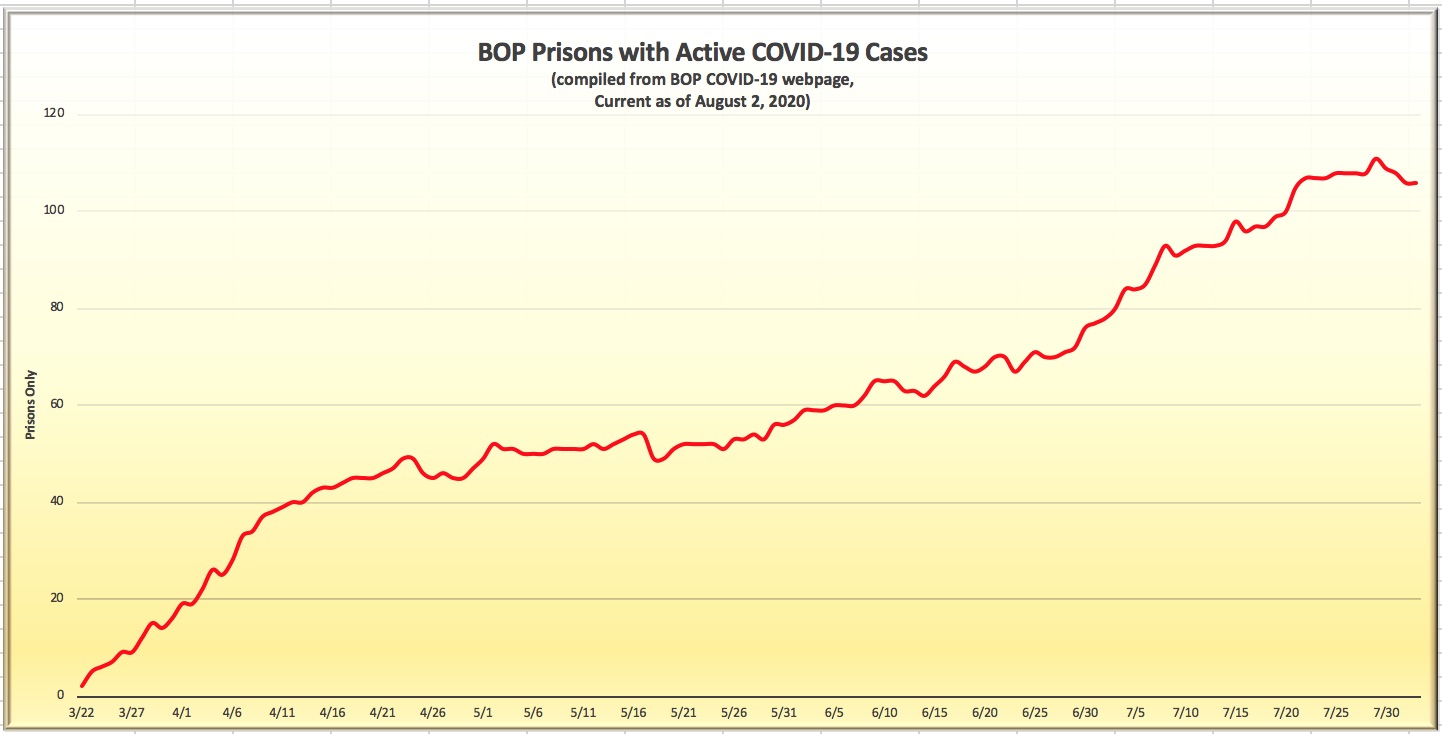

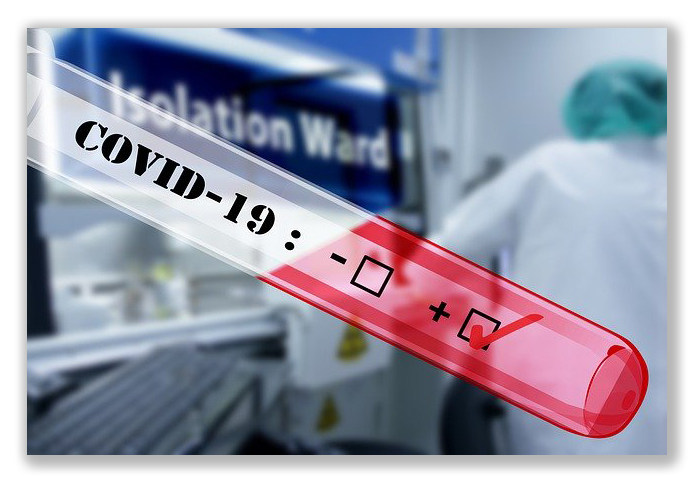

 Ohio State law professor Doug Berman lamented in his Sentencing Law and Policy blog last week that “I am not really surprised that Prez Trump has entirely failed to deliver on his promise back in March to look at freeing elderly “totally nonviolent” offenders from federal prisons amid the pandemic. But I figure now is as good a time as any to highlight again that Prez Trump could and should, via just a stroke of a pen, bring clemency relief to the many, many federal prisoners who, like Roger Stone, are older, medically vulnerable and present no clear risk to public safety.”
Ohio State law professor Doug Berman lamented in his Sentencing Law and Policy blog last week that “I am not really surprised that Prez Trump has entirely failed to deliver on his promise back in March to look at freeing elderly “totally nonviolent” offenders from federal prisons amid the pandemic. But I figure now is as good a time as any to highlight again that Prez Trump could and should, via just a stroke of a pen, bring clemency relief to the many, many federal prisoners who, like Roger Stone, are older, medically vulnerable and present no clear risk to public safety.”